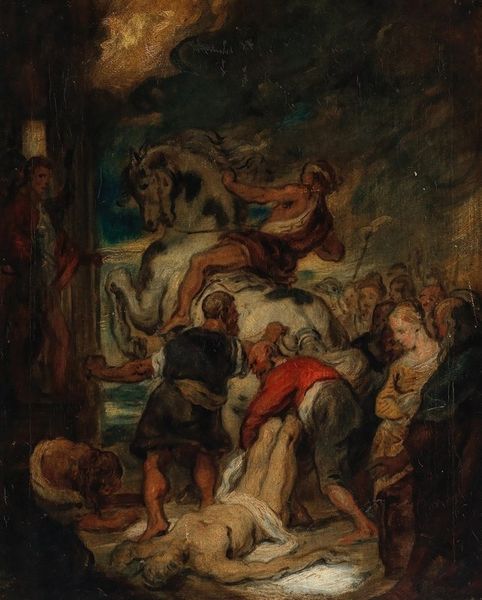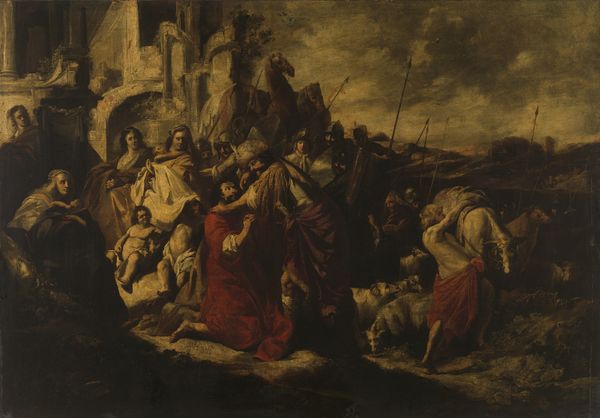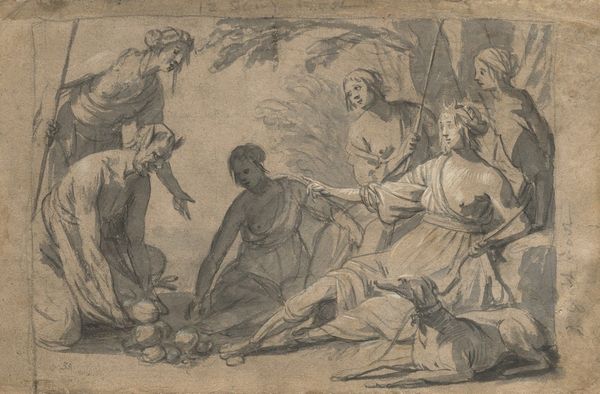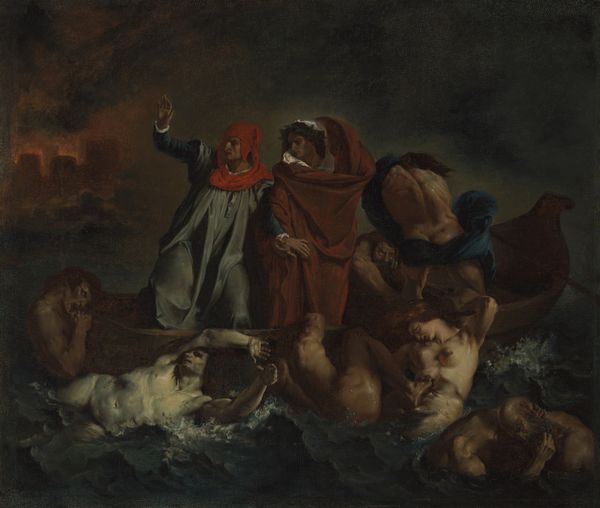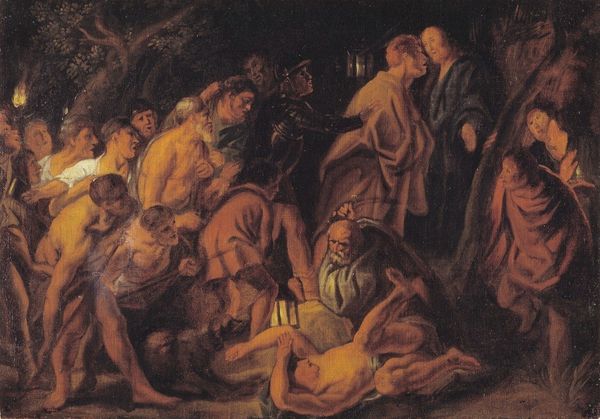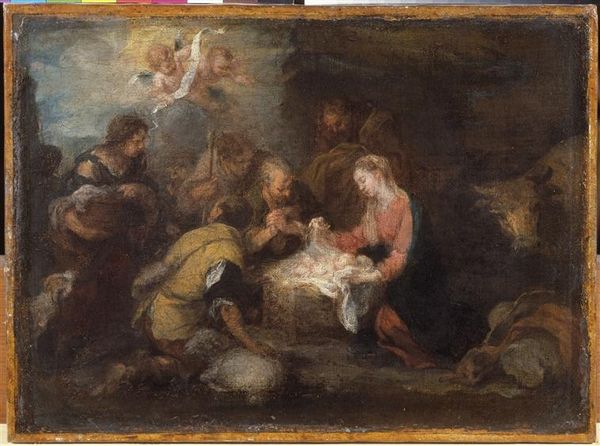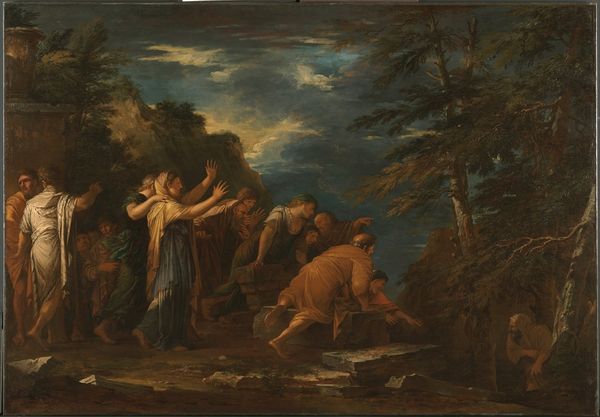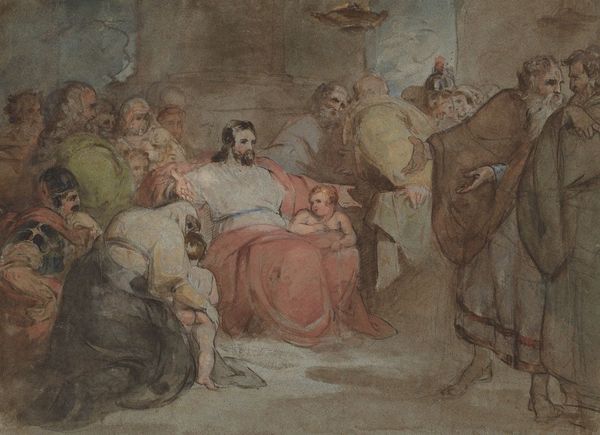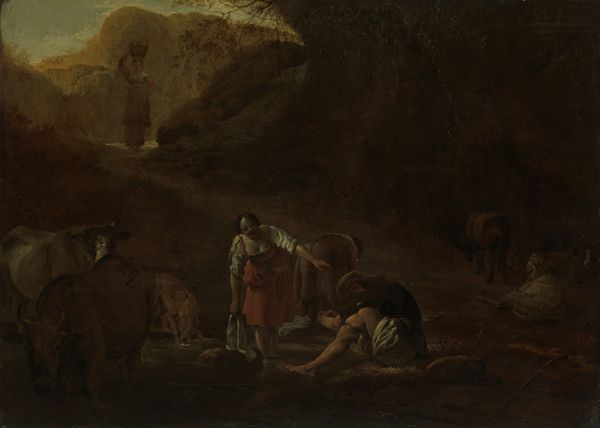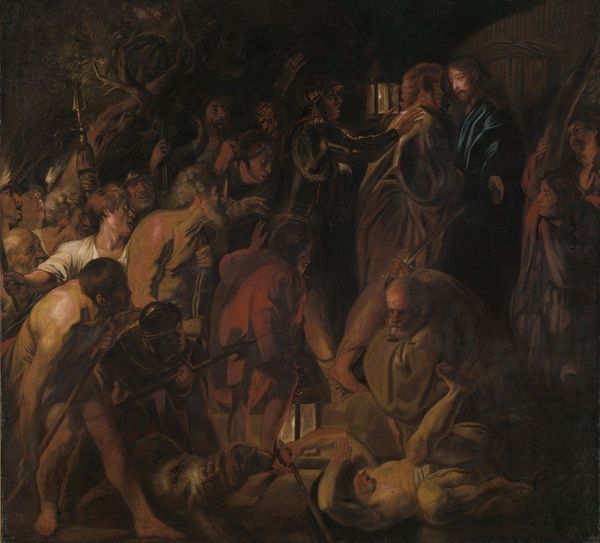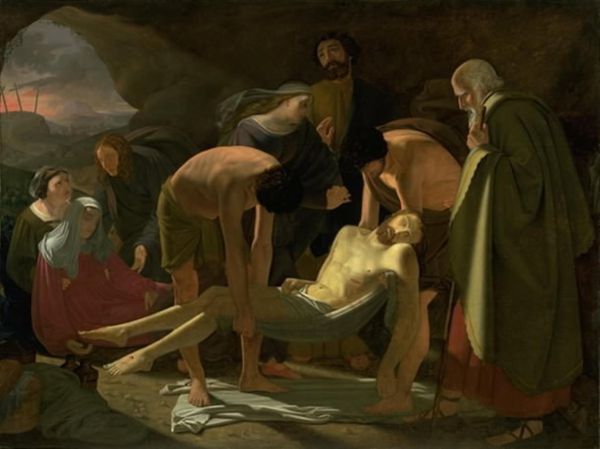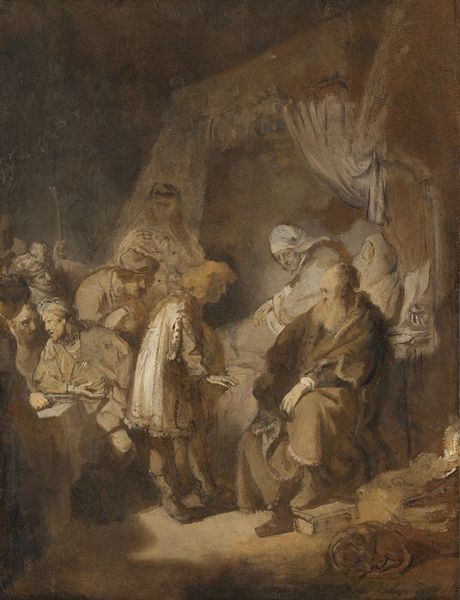
Copyright: Public Domain: Artvee
Curator: Honoré Daumier created this compelling oil painting entitled "Christ and his Disciples" sometime between 1830 and 1879. It strikes me as a somewhat atypical subject for Daumier. Editor: It has a subdued, almost melancholic feel. The figures are shrouded in shadow, creating a sense of intimacy, but also perhaps unease. Are we meant to view this as a historical reenactment or more of a symbolic representation of faith and discipleship? Curator: Daumier, though celebrated for his satirical lithographs commenting on Parisian life, engaged with religious themes throughout his career. His approach to these themes reflects broader trends in 19th-century art where artists grappled with faith in an era of rapid social and scientific change. Consider how religious imagery, historically commissioned by the Church, increasingly entered the realm of personal and political expression. Editor: I agree, and the social dimensions are impossible to ignore. This portrayal avoids idealized depictions, focusing on individuals who look worn and ordinary, reminiscent of the working class whom Daumier championed. I question whose story is being told and for whom. Does it offer a comforting narrative for the downtrodden or something more complex? Curator: That’s a critical question. Daumier’s art frequently blurs the line between the sacred and profane. I wonder about the placement of the light? It’s as if he’s using the conventions of religious painting—the halo, for example—to invest these everyday figures with a kind of quiet dignity. Editor: Exactly! Daumier challenges the viewer to confront preconceived notions about holiness and virtue. The halo becomes less a sign of divinity and more a marker of human worth. This challenges the power structures within religious institutions, asking who is considered worthy of spiritual attention. Curator: And the muted color palette reinforces that sense of gravity, doesn't it? It anchors the scene in a reality that feels accessible. We could easily imagine this gathering in a humble setting, emphasizing Christ’s connection to ordinary people. The painting seems to ask whether institutions live up to such direct expressions of belief. Editor: Overall, "Christ and his Disciples," allows us to think about who gets included and who gets excluded from dominant religious narratives and spaces, both in Daumier’s time and now. Curator: Indeed. It reveals a nuanced understanding of faith and human existence in a world undergoing radical transformation. Editor: A compelling convergence of the spiritual and social!
Comments
No comments
Be the first to comment and join the conversation on the ultimate creative platform.
